PVA filament is a water-soluble support material that transforms your dual-extruder 3D printing by enabling complex geometries with intricate overhangs and internal cavities. You’ll print PVA at 180-200°C alongside materials like PLA, then dissolve the supports completely in water without chemicals. The material requires careful moisture management since it absorbs 10-15% humidity in 24 hours, demanding airtight storage with desiccants. With proper printer calibration and storage practices, you’ll access advanced printing capabilities and cost-effective optimization strategies.
What Is PVA Filament and How Does It Work
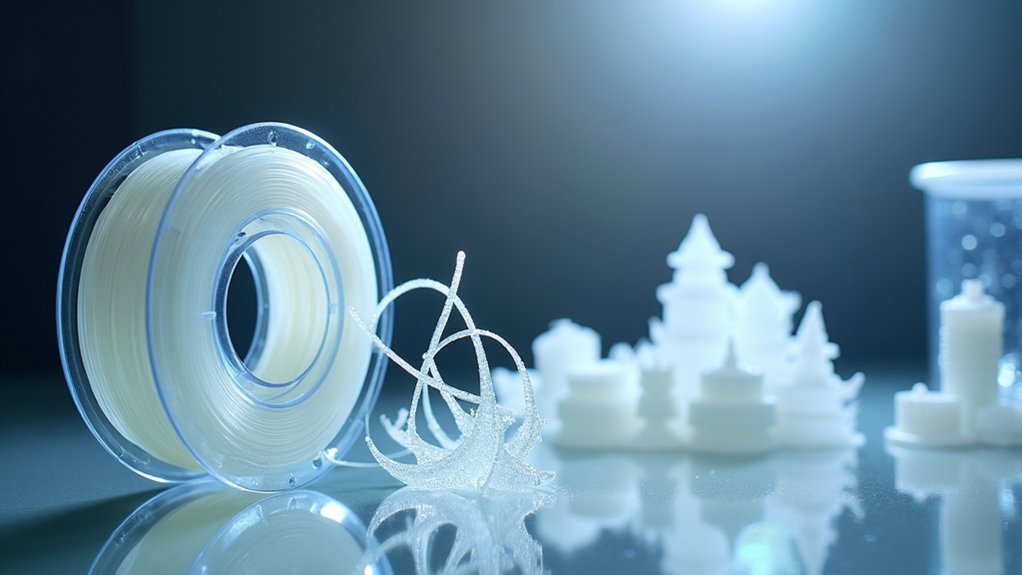
PVA filament serves as a revolutionary support material that transforms how you approach complex 3D printing projects.
This synthetic polymer, created by polymerizing vinyl acetate and hydrolyzing it into polyvinyl alcohol with the formula [CH₂CH(OH)]ₙ, works exclusively as temporary scaffolding for your prints.
You’ll extrude PVA through a second nozzle in dual-extrusion setups, depositing it layer by layer alongside your primary material. The filament prints at 180–200°C, making it compatible with materials like PLA that share similar temperature requirements.
What makes PVA exceptional is its complete water solubility.
After printing, you simply dissolve the support structures in water, eliminating mechanical removal that could damage delicate features. This process leaves your final print clean and intact without requiring toxic solvents.
PVA filament typically appears in white or translucent variations, depending on the specific coloring agents added during manufacturing.
Physical Properties and Material Characteristics
Understanding PVA’s physical and material characteristics enables you to optimize your 3D printing process and achieve consistent, high-quality results.
With a density of 1.25-1.26 g/cm³, PVA offers excellent dimensional stability without warping or cracking. You’ll achieve tensile strengths of 65-75 MPa and flexural strengths of 88-92.5 MPa in X-Y directions, providing robust support structures.
PVA’s impressive density and strength properties deliver exceptional dimensional stability and robust support structures for professional 3D printing applications.
PVA’s defining characteristic is its complete water solubility—40μm sheets dissolve at 20°C without chemicals.
However, this creates challenges with moisture sensitivity, as it absorbs 10-15% water in 24 hours. You must store filament in sealed containers with desiccant at ≤20% relative humidity. Well-preserved spools contribute significantly to maintaining these optimal storage conditions and overall print quality.
The material’s heat deflection temperature reaches 55°C, while maintaining biodegradability under UV light and humidity conditions.
Setting Up Your Dual Extruder Printer for PVA
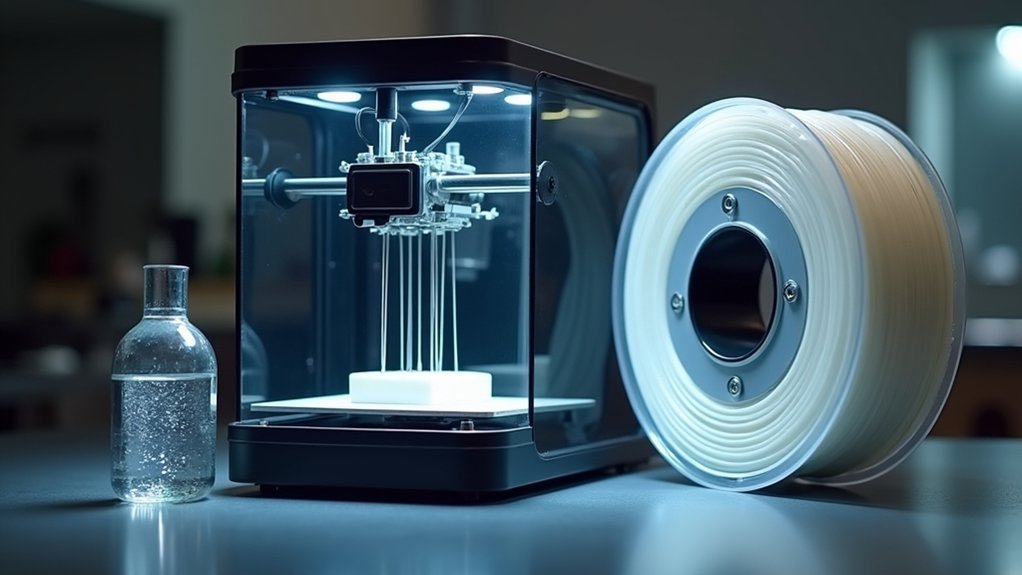
Successfully implementing PVA support requires proper dual extruder setup that goes beyond basic material knowledge. You’ll need to calibrate nozzle heights meticulously, ensuring both extruders align perfectly with your print bed. Set X/Y offsets accurately to prevent misregistration between materials.
| Setup Component | Success Factor | Failure Consequence |
|---|---|---|
| Nozzle Height | Level calibration | Poor layer adhesion |
| X/Y Offsets | Precise alignment | Print misregistration |
| Filament Storage | Moisture control | Clogging issues |
| Extruder Assignment | Correct mapping | Wrong material placement |
| Prime Tower | Clean changes | Oozing problems |
Load PVA into your dedicated extruder while maintaining it in moisture-controlled storage. Configure your slicer to assign PVA specifically for support structures, enable prime towers for clean changes, and always preview toolpaths before printing. Position your storage container higher than the printer to ensure proper filament feeding and thread the PVA through guide tubes to prevent binding during printing.
Optimal Print Settings and Speed Recommendations
Once you’ve configured your dual extruder printer, dialing in the precise temperature and speed settings becomes critical for achieving professional-quality prints with PVA support material.
Set your PVA temperature between 180–200°C, though brand-specific requirements vary—MatterHackers PVA works best at 185±15°C while Ultimaker PVA needs 215±5°C.
Don’t exceed these ranges or you’ll face clogging and material degradation.
Reduce your print speed to around 25 mm/s for support structures to enhance quality and minimize stringing.
Configure proper retraction settings to prevent oozing during multi-material printing, and cool the PVA hotend when it’s inactive. Consider using dense support layers to minimize material consumption while maintaining structural integrity.
- Watch your first successful complex overhang print emerge flawlessly
- Experience the satisfaction of effortlessly dissolving away supports
- Feel confident tackling previously impossible geometries
Water Dissolution Process and Support Removal
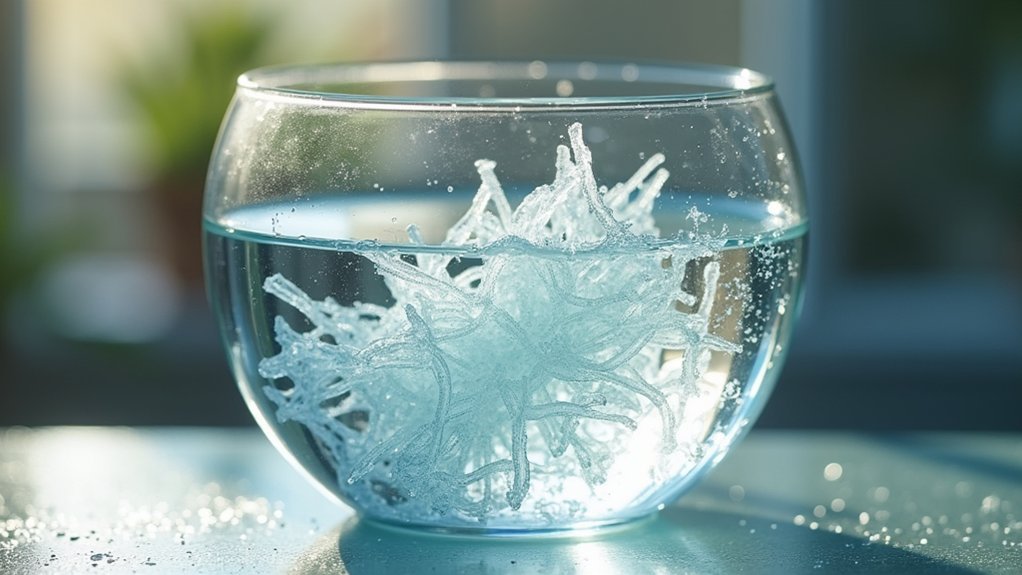
After perfecting your print settings and watching your complex geometry emerge with flawless overhangs, you’ll reach the most satisfying part of the PVA workflow: dissolving away those supports to reveal your finished masterpiece.
Simply immerse your print in warm water (30–40°C) for best results. PVA dissolves by breaking hydrogen bonds on contact—no special solvents needed.
For large support sections, soak for 10–30 minutes, then remove chunks manually with pliers. The remaining PVA will soften and can be rubbed away easily. If you encounter any difficulties during this process, engaging with the support community can provide valuable troubleshooting guidance from experienced users.
Complete dissolution typically takes 1–2 hours in warm water, though cold water works if you’re patient.
The process is completely safe—PVA is biodegradable and non-toxic, so you can dispose of the dissolved solution down your drain without environmental concerns.
Cost Optimization Strategies and Material Savings
While PVA’s superior support capabilities come at a premium compared to standard filaments, strategic optimization can dramatically reduce your material costs without sacrificing print quality.
You’ll save the most by implementing dense support layers, using PVA only at critical interface points rather than throughout entire structures. Design your parts with self-supporting angles and minimize overhangs to reduce support volume requirements. Consider part consolidation to eliminate assembly requirements and reduce the overall need for complex support structures.
Proper material handling prevents costly waste—store PVA in moisture-proof containers with desiccants and dry filament before printing. Strategic part orientation and stacking can eliminate up to 90% of support needs.
- Watch your expensive PVA filament turn to worthless sludge from moisture exposure
- Cringe as failed prints waste hours of work and premium material costs
- Celebrate slashing support material expenses while maintaining perfect print quality
Storage Requirements and Moisture Management
Because PVA absorbs moisture like a sponge, you’ll need military-grade storage discipline to keep this finicky filament usable.
Store PVA immediately in airtight containers or vacuum-sealed metalized polyester bags with desiccants. MakerBot strongly recommends vacuum-sealed storage when not printing. Consider investing in a dedicated drybox for maximum protection.
Maintain your printing environment below 50% humidity and 28°C ambient temperature. If your filament absorbs moisture, dry it using commercial dehydrators or low-temperature ovens before use.
Cool your nozzle between prints to prevent clogs, and guarantee proper ventilation during printing. Develop user guides for troubleshooting common moisture-related printing issues to prevent frustration during the printing process.
Renew desiccants regularly and inspect filament for moisture damage signs. Store spools away from direct sunlight in controlled environments.
These storage practices directly impact print quality and prevent costly reprints.
Frequently Asked Questions
Can PVA Be Recycled After Water Dissolution?
You can’t recycle PVA after water dissolution because it breaks down into simpler components that support microbial growth. The dissolved material becomes environmentally beneficial nutrients rather than recoverable plastic.
Is PVA Compatible With All FDM Printer Hotends?
You can’t use PVA with all FDM printer hotends. You’ll need hotends that reach 160-200°C and handle humidity-sensitive materials. Dual extruder setups work best for effective PVA support printing.
What Environmental Impact Does Dissolved PVA Have on Water Systems?
When you dissolve PVA, you’re releasing persistent pollutants into waterways. It creates foam that reduces oxygen transfer, adsorbs toxic chemicals, and over 75% remains undegraded, harming aquatic ecosystems.
Can PVA Supports Be Reused if Printing Is Interrupted?
You can’t reuse PVA supports after printing interruptions. You should remove them promptly because they’re highly moisture-sensitive and degrade quickly, making them unsuitable for future use due to their reactive nature.
Does PVA Work With All Main Filament Types?
PVA doesn’t work with all filament types. You’ll find it’s compatible with PLA, ABS, nylon, and TPU, but PETG compatibility varies by geometry. Temperature differences limit PVA’s use with high-temp materials.
In Summary
You’ve now got everything you need to successfully print with PVA support material. Remember that proper storage and moisture control are essential for consistent results. Don’t rush your print speeds, and you’ll save material costs in the long run. With your dual extruder properly calibrated and these dissolution techniques mastered, you’ll achieve clean, professional prints with complex geometries that weren’t possible before.

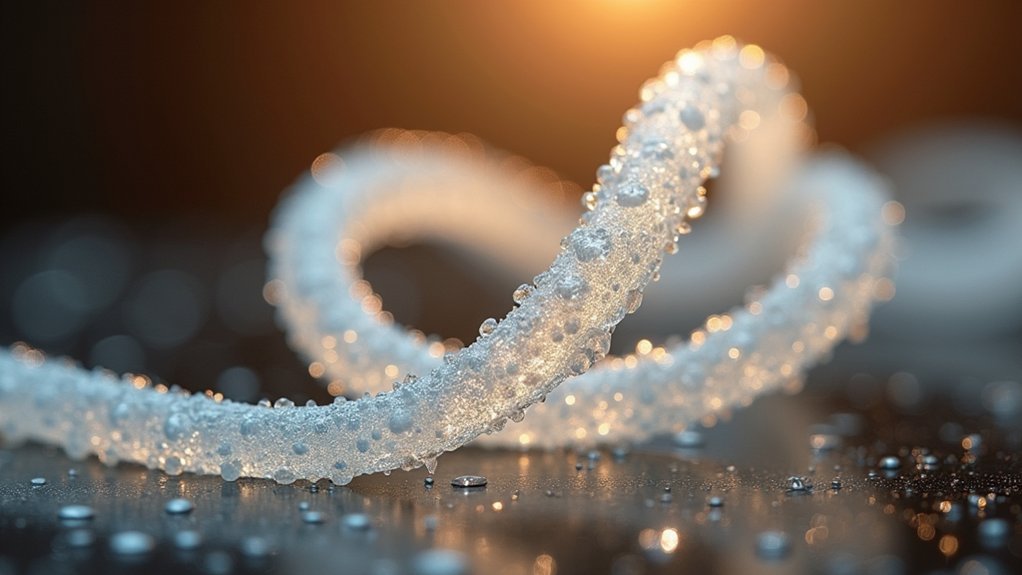
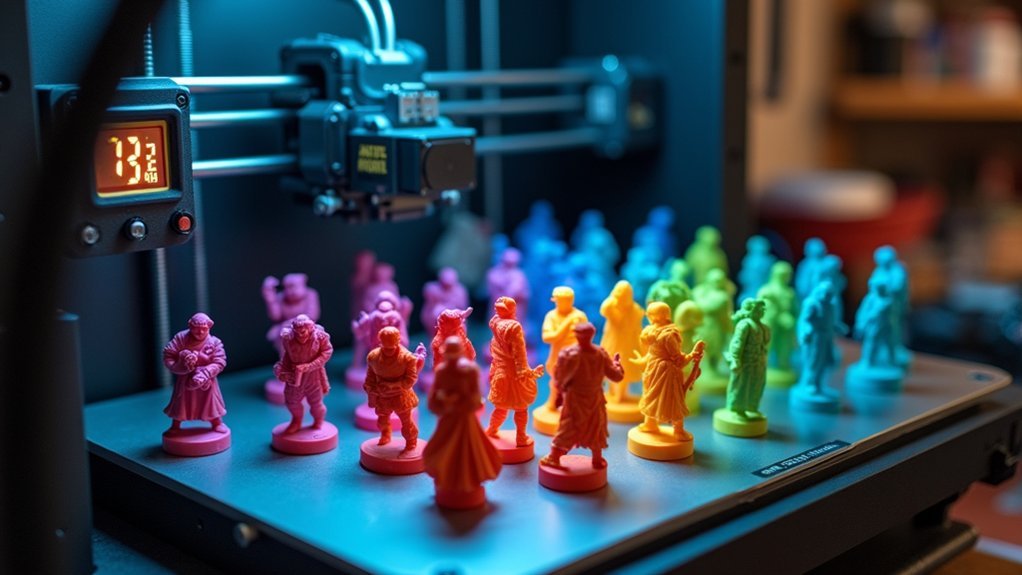
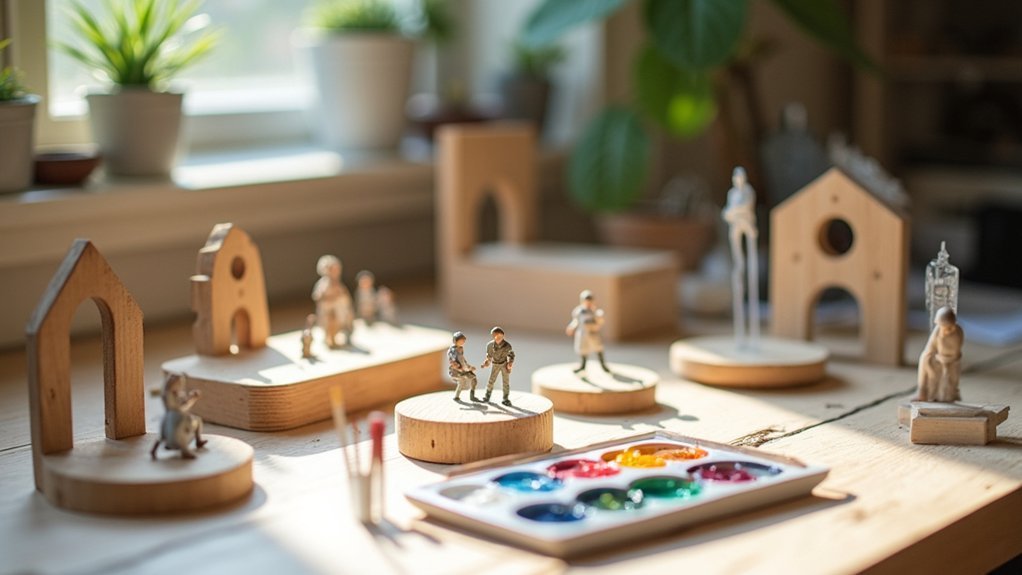
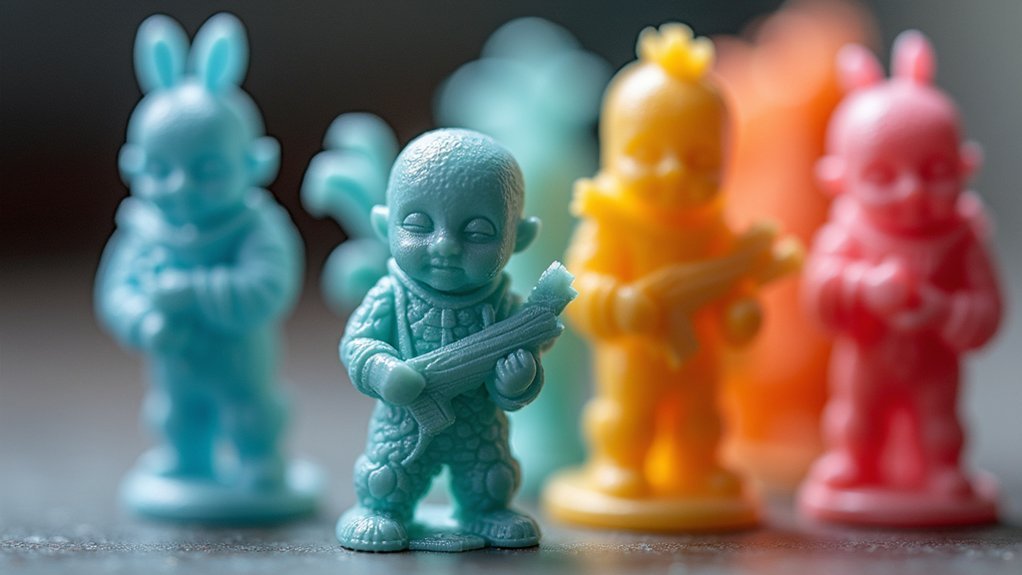
Leave a Reply